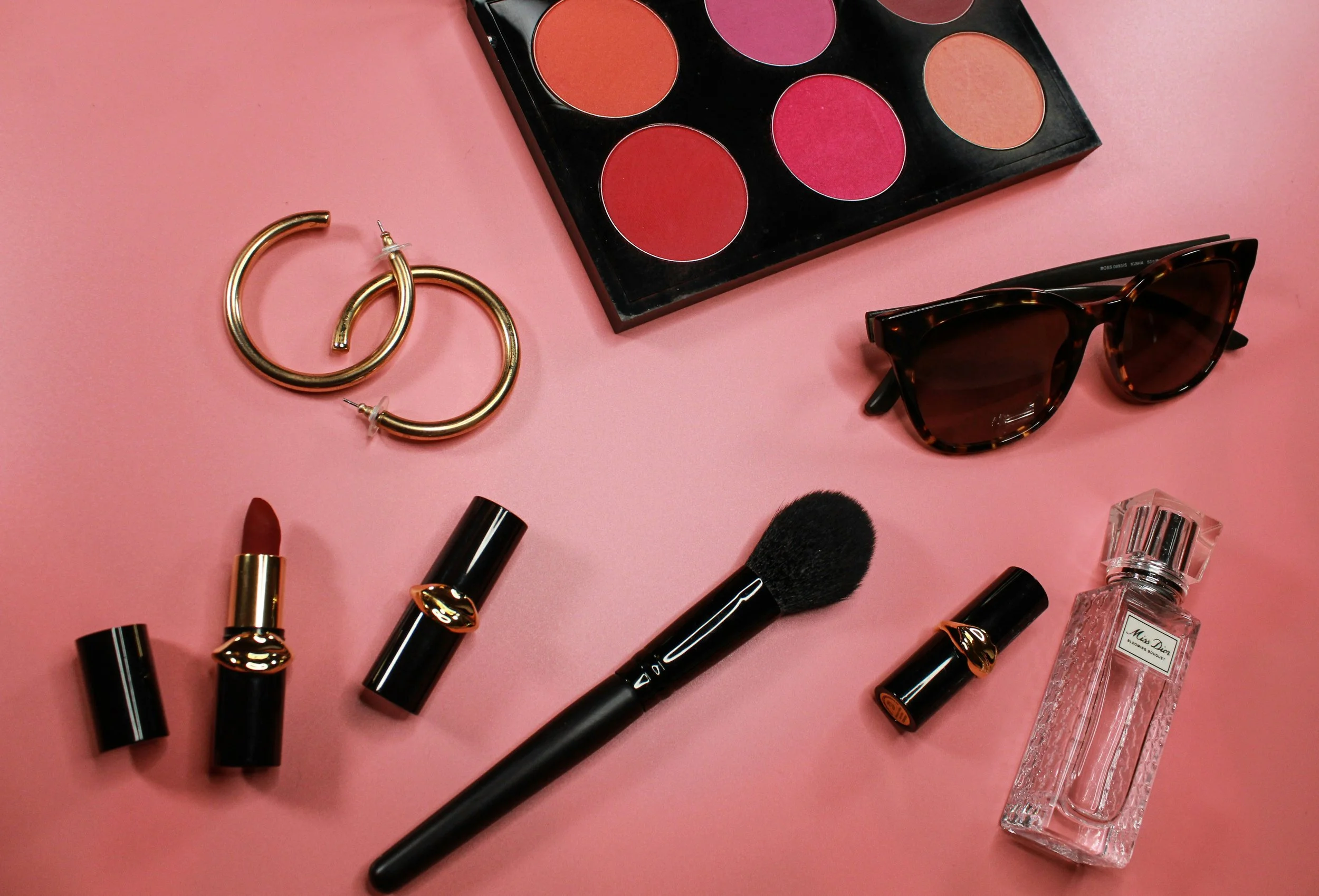How to Invest for the Most Happiness, Not the Most Money
October 25, 2021
The Wealth Planner
The only personal finance tool on the market that’s designed to transform your plan into a path to financial independence.
Get The Planner
Subscribe Now
Biggest Finance Newsletter for Women
More than 10 million downloads and new episodes every Wednesday.
The Money with Katie Show
Recommended Posts
If your instinctual response to the title of this post was, “Wait, but aren’t those the same thing?”, your training is complete. I now feel I’ve successfully brainwashed you into the relentless pursuit of wealth.
After all, like Jonathan Haidt says in his book The Happiness Hypothesis, “Those who think money can’t buy happiness just don’t know where to shop.”
But happiness research can be interesting, mostly because it feels like one of the only things on earth we can’t research empirically: All of the happiness studies I’ve seen use self-reported measures of happiness, which means there’s no real objective way to gauge it.
You’ve probably seen the 2010 study that claims happiness begins to plateau after you receive an annual income of $75,000, an idea that has now been more or less disproven – one study going so far as to claim (hilariously) that people with $10M are measurably happier than those with a paltry $1-2M.
Those poor little millionaires!
What are we to make of all this happiness research and its ties to income?
Is it even possible to objectively assess something as complex and personal as happiness, let alone money’s impact on your subjective experience of it?
Financial goals, sacrifice, and taking the shortest, hardest path
I’ve been thinking a lot recently about the psychological pressures we put on ourselves when we set financial goals.
If you make $5,000 per month and your goal is to save $2,500 (50% save rate, for those keeping score) simply because a 50% save rate makes intuitive sense to you on your journey to financial independence, you’ll likely find yourself in situations where you’re foregoing small luxuries or experiences to stay under your self-imposed budget.
This is the point where I, as the self-proclaimed millennial money guru, tell you that this is a good thing. Discipline! Sacrifice! Focus!
And sure, to an extent, those traits will #behoove you on your financial journey to freedom.
But it begs the question:
What’s the point of reaching financial independence?
What’s the point of financial independence? To never work again and tap-dance out of the boardroom forever? Maybe.
Ostensibly, the point of achieving financial freedom is to facilitate happiness.
In the short-term, you may be willing to make some sacrifices to eventually end up in your hypothetically happier, financially free state.
But what if that’s not the case?
You know that old saying, “It’s the journey, not the destination!” What if that applies here, too?
There’s research that suggests humans overestimate how much incremental happiness they’ll feel from large changes, because we often return to our baselines after big, circumstance-altering shifts. That’s fancy scientific talk for the idea that your baseline level of happiness may not change as much as you think once you reach FI.
I would estimate that my life will get roughly 20% better when I hit FI. It won’t change everything, but it’ll change enough of the things that actively annoy me on a daily basis and give me a lot of time back.
If I’m a 7 every day now, I don’t think it’s outrageous to assume I’d be an 8.5 or 9 when I hit FI.
Today, I want to measure just how much small sacrifices materially change your timeline to FI.
To help us do this, you’re going to have to suspend disbelief with me for a moment and pretend that we could assign a value to your happiness level on any given day.
For example:
Let’s pretend the mornings where you buy a fancy coffee and a scone from the shop down the street and start work a little later give you a 10% boost in happiness.
If we’re measuring happiness on a scale of 1-10, maybe this ritual takes you roughly from a 7 to an 8.
Normally, I’d be the voice of reason in this scenario and remind you that purchasing pleasure is a slippery slope and it requires constant swiping to be satisfied and blah, blah, blah – but not today.
Nope – today, we’re acknowledging that these little purchase hits (let’s call ‘em dopamine bumps, for fun) are capable of making you just a little bit happier in your day-to-day life. Sure, there’s a price associated – but you’re trading money for happiness, right?
So often we look at two factors: money and time.
What about the third? What about happiness?
Those happiness measurement points we mentioned above? We’re going to carry those forward in this analysis.
How much does #light hedonism slow us down?
I should clarify two things right now: Spending more will absolutely result in you having less money, or, at the very least, the same amount of money, but later. And that’s okay. The point isn’t to have as much money as possible (or even to be financially independent as fast as possible), but to achieve the most total cumulative happiness.
The framework
All right, rich girl. Let’s get hypothetical, shall we?
Using our earlier $5,000/mo. income and goal 50% savings rate, that means we’re allowing ourselves to spend $2,500 so we can invest $2,500 per month ($2,500 per month is $30,000 per year).
I’m afraid to make this overly complicated since we’re already involving literally imaginary variables, so instead of bringing inflation, average raises, and more changes into this, we’re going to hold the $5,000/mo. income and $2,500/mo. savings consistent.
(We’re illustrating a point here, not publishing an academic paper.)
At that rate, our hypothetical rich girl needs $750,000 to be financially independent (to spend $2,500/mo. forever; $2,500/mo. * 12 months * 25, to calculate FI).
If she saves $2,500/mo., she’ll reach financial independence with $822,493 after 15 years (assumes an average 8% rate of return).
That’s 15 years of sacrifice, assuming she’s avoiding purchasing #HappinessUnits to hit her $2,500/mo. goal.
How much extra money would she have to spend each month for some happiness units?
I’m going to use my own life as an example here and rack up some happiness charges that will make her life better.
-
$100 biweekly for cleaning services
-
$5 per day for fun coffee
-
$30 for one nice lunch out during the work week, every week
That’s $470 more per month for convenience and a little #joy, but you can substitute your own ideas here (and I’d recommend thinking of things that would actually make your life better and determining how much they cost!).
Our hypothetical rich girl is spending roughly 19% more each month to enjoy these little luxuries, and therefore saving 19% less, because her save rate was 50% before. Now, it’s 40%.
Maybe our weekly lunches, daily special coffees, and cleaning services buy us an additional 10% of happiness.
Nothing crazy, right? We’re not trying to change our entire lives: Just be 10% happier.
Now, it’s important to remember that our FI number is directly impacted by how much we’re spending. Now that we’re spending an extra $470 per month, our FI number goes up: Instead of $750,000, we now need $891,000 ($2,970/mo. * 12 months * 25).
Instead of saving $2,500 per month, we’re only saving $2,030.
We need 19% more, and we’re saving 19% less. But we have an extra near-$500 per month to spend on whatever we want to make us happier, right?! Surely that’s going to make the journey feel 10% better, right?
So how much is our timeline thrown off by needing 19% more and saving 19% less?
Now, we’d be financially independent after 18 years with $920,399.
It took approximately 20% longer.
But you were 10% happier than you would’ve been for 15 years, and delayed the big, life-altering shift by 3 years.
Put another way:
Would you rather be a “7” level of happiness for 15 years and then jump up to a 9, or an “8” level of happiness for 18 years before jumping to a 9?
Of course, our happiness metric here is more or less made up – but to the extent that you can quantify how much spending an extra 20% each month would make you happy, you could perform this same thought experiment for yourself.
How to calculate how much spending for a little hedonism will throw you off on your timeline to FI
Paid non-client of Betterment. Views may not be representative, see more reviews at the App Store and Google Play Store. Learn more about this relationship. Any links provided to other websites are offered as a matter of convenience and are not intended to imply that Betterment or its writers endorse, sponsor, promote, and/or are affiliated with the owners of or participants in those sites, or endorses any information contained on those sites, unless expressly stated otherwise.
Hypothetical examples are for illustrative purposes only, not attributable to any specific portfolio’s performance, and should not be utilized when making a specific investment decision, as actual performance may vary depending on your unique circumstances and factors not necessarily accounted for here, such as market volatility, inflation, advisory fees, reinvestment of dividends or earnings, rebalancing, or tax-saving features, etc. Rate of return is assumed to be compounded annually. All performance, events, persons, and results described herein are entirely fictitious.
This holds steady if you’re starting with a 50% save rate – because a 10% decrease in savings automatically means a 10% increase in spending, and vice versa.
Here’s what I’d do next to gauge this for myself:
-
How much do I make each month now?
-
How much do I spend? Do I honestly feel like I’m making sacrifices right now to spend less?
-
When am I on track to hit FI right now? (Need to know your current invested assets, amount you’re adding to them each month, and how much you spend per month * 300)
-
What types of things would I want to intentionally add back into my day to bring more joy, and how much would they cost?
-
How much more per month would I have to spend to achieve a 10% boost in happiness?
-
How would that spending increase impact my timeline?
Here are my hypothetical answers:
-
Between my full-time income and my business, say I make about $20,000 per month after taxes.
-
Let’s assume I spend about $3,000 per month, and sometimes feel like I’m making sacrifices to stay under-budget.
-
By adding an additional $17,000 per month to my current invested assets of $345,000, I’m on track to hit my FI number of approximately $1M in 3 years if I make an average return of 8%.
-
I’d love to be able to fly First Class, take Uber Blacks to the airport (don’t ask), go out to eat and not look at the prices on the menu (the true mark of wealth), and get regular massages.
-
I estimate these additions would take about $2,000 more per month to make, or $5,000 total.
-
If I spend $5,000 per month instead of $3,000, that means I’d be investing $15,000 per month instead of $17,000. When plugging these numbers into a compound interest calculator, my timeline doesn’t change. I still hit $1M in 3 years.
Again, my example is just hypothetical and might even be a little extreme on the income side of things. That’s partially why I would still apply a bit of a scarcity mindset – I don’t have a $20,000/mo. guaranteed salary.
But knowing that if I can keep it up for 36 months I could afford to spend more each month and not really change my timeline? Pretty cool.
Try this out for yourself and see what it would cost to increase your happiness on the journey – you might be sacrificing to reach a destination faster that isn’t all it’s cracked up to be.
Consider investing in a tax-smart, diversified way, to help you work towards your goals. I recommend Betterment because they remove a lot of the friction (you tell them your goal, answer a few questions, contribute cash, and that’s it). Their algorithm helps you invest that money in a way that makes sense for your goals – whether they’re long or short.
You may also like…
Featured
Looking for something?
Search all how-to, essays, and podcast episodes.
Explore
While I love diving into investing- and tax law-related data, I am not a financial professional. This is not financial advice, investing advice, or tax advice. The information on this website is for informational and recreational purposes only. Investment products discussed (ETFs, index funds, etc.) are for illustrative purposes only. It is not a recommendation to buy, sell, or otherwise transact in any of the products mentioned. Do your own due diligence. Past performance does not guarantee future returns.
Money with Katie, LLC.
Terms & Conditions | Privacy Policy
This Site Was Built by Brand Good Time




